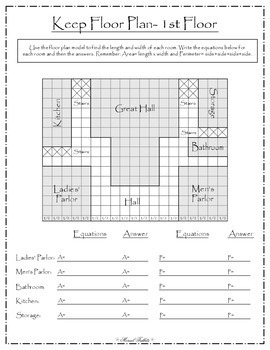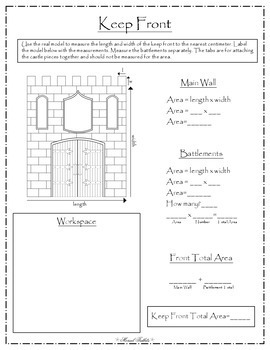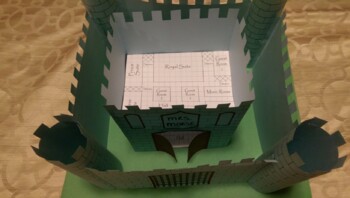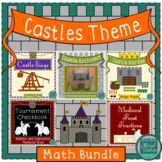Castle Architect- An Area and Perimeter Project
- PDF
- Easel Activity
What educators are saying
Also included in
- 3rd Grade Math: Medieval Themed Style! Plan and build a castle, throw a feast and a tournament, organize the castle garden, and lay siege to a neighboring castle!The Castles Theme: 3rd Grade Math Bundle covers the following math skills.♦ Castle Siege- Elapsed Time♦ Castle Architect- Area and PerimetPrice $16.32Original Price $21.75Save $5.43
Description
Become a castle architect and calculate the area and perimeter of a castle model in 3 stages. Students measure, label, and calculate the area and perimeter on floor plans for the keep and measure to calculate area for each castle wall before finally building the castle model.
The model is based on a stone keep castle with a stone keep in the middle surrounded by a curtain wall for protection.
Note: The Castle Model is included with the Castle Architect Project. No need to buy the separate model as well!
Includes:
***Now includes an Easel Activity to complete the student booklet portion. The model will still need to be completed in person.***
♦ Lord's Manor- A teacher example for the floor plans. This part is available as a freebie. The Keep Floor Plan worksheets follow the same format.
♦ Keep Floor Plan Worksheets- 2 floors and a blank template available for customization. Students find the area and perimeter of rooms for two floors of the keep and total area of each floor.
♦ Architect Book- Students find the total area of each castle wall by measuring the real castle model and keeping track of the measurements and calculations in the Architect Book. Each wall has its own page in the book.
♦ Castle Model- Students create the model of the keep with the two floor plans inside and the surrounding walls and towers.
♦ Answer Keys for Lord's Manor, Keep Floor Plan Worksheets, and Architect Book
♦ An area model explanation page- This is the suggested method for the double digit multiplication in this project. Worksheets are available with and without the area models.
Check out the preview to see a break down of math skills used in each of the three stages of the project, the area model page, grade level tips, and of course previews of the actual pages. You can also read about the project on my blog post.
*************************************************************************
More Medieval Fun
♦ Quest for the Kingdom: End of the Year Math Review Project-Gamification Style
♦ Tournament Checkbook: Leveled Addition and Subtraction Activity
♦ Medieval Feast Fraction Project
♦ Castle Garden: An Arrays Activity
For more medieval or pirate fun, check out Morsel Tidbits.







